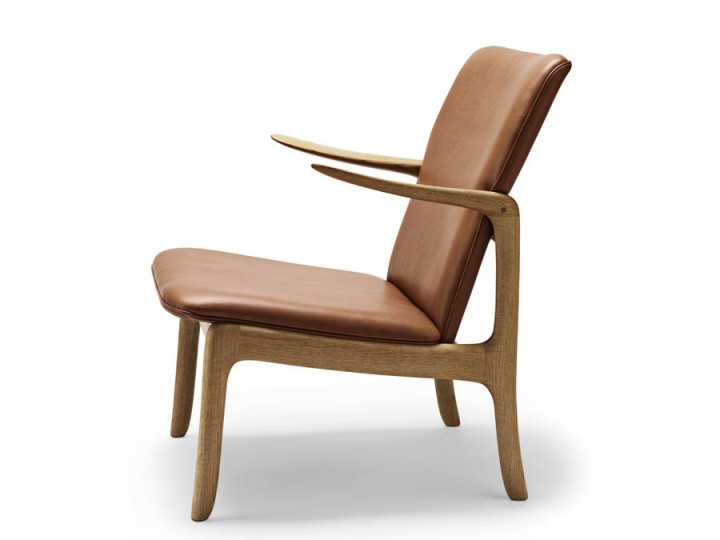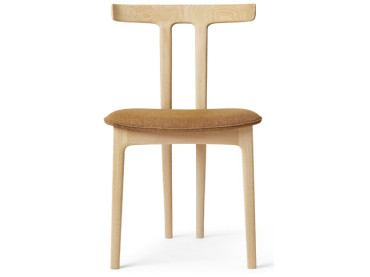Mid-Century modern scandinavian chair model OW124 "Beak Chair" by Ole Wanscher.
-
Ole Wanscher
-
Carl Hansen & Søn
- CH050 On demand. Delivery time 8-10 weeks
Mid-Century modern scandinavian chair model OW124 "Beak Chair" by Ole Wanscher. *Required step
In order to help you to choose, and to receive samples, do not hesitate to contact us by email: contact@galerie-mobler.com or by phone: 01 43 33 20 12
Ole Wanscher presented the OW124 Beak Chair at the Copenhagen Cabinetmakers’ Guild Furniture Exhibition in 1951. An elegant mark of Wanscher’s refined design and bold pushing of boundaries, the chair was also a testament to his masterful grasp of furniture-making. The Beak Chair’s distinctive look is thanks in part to the beak-like armrests that inspired its name. This unique design feature demands carefully selected materials and skilled craftsmanship, as do the upholstered seat and back. Showing Wanscher’s preference for slender dimensions and durable shapes, the design features slim, gently curving elements that seamlessly unite in an organic flow. Only the armrest cover caps remain visible: a functional and decorative detail similar to a bird’s eye.
| Dimensions | H : 79 cm. W : 65 cm. D : 73 cm. Seat H : 40 cm. |
| Material | Oak or walnut. Leather. Fabric or leather. |
| Style | Classique Neuf |
| Origin | Denmark. |
| Fournisseur | Carl Hansen & Søn |
Ole Wanscher
Ole Wanscher (1903-1985), was born in Copenhagen in 1903 and was an architect and professor of architecture with furniture designs as his specialty. He came to shape Danish furniture, both as an active designer and as a master teacher. His furniture designs are now considered to be modern classics - sophisticated and functional with an exquisite attention to detail.
Construction and form was of the utmost importance to Ole Wanscher, treating furniture design as if it was a branch of architecture. He studied under Kaare Klint at the Royal Danish Academy of Fine Arts and also worked for the master himself from 1924-1927, before becoming an independent achitect specializing in furniture design. He later followed in Kaare Klint's footsteps as a professor at The Royal Dansih Academy of Fine Arts with a master in furniture design.
In 1958, the Danish newspaper Politiken wrote the following about the outstanding quality and spirit of Ole Wanscher's products: 'Owning a Wanscher-chair is an adventure every day, and will be so even serveral hundred years from now, for this is how long it lasts.'
Ole Wanscher created his best known products primarily in the period between the late forties and early sixties. He took great interest in industrially produced high quality furniture and designed serveral pieces with thiss particular aspect in mind. It was the familiar philosophy of 'design for everyone'. However, his finest work was made in close collaboration with reowned master cabinetmakers.
Furthermore, while traveling through Egypt and Europe, Ole Wanscher studied furniture design. He embraced these impressions, was inspired by them and and brought to them his very own sensibility. He also authored several books, including "The History of the Arts of Furniture" and "Five Thousand Years of Furniture".
Characteristic of Ole Wanscher's design is a quest for slim dimensions and resilient forms. His chairs often employ both slender and slightly curved armrests, which rise in an elegant tip before continuing directly to the floor; as is the case with his well known 'Colonial Chair'. Classic and yet singularly modern at the same time.



































































